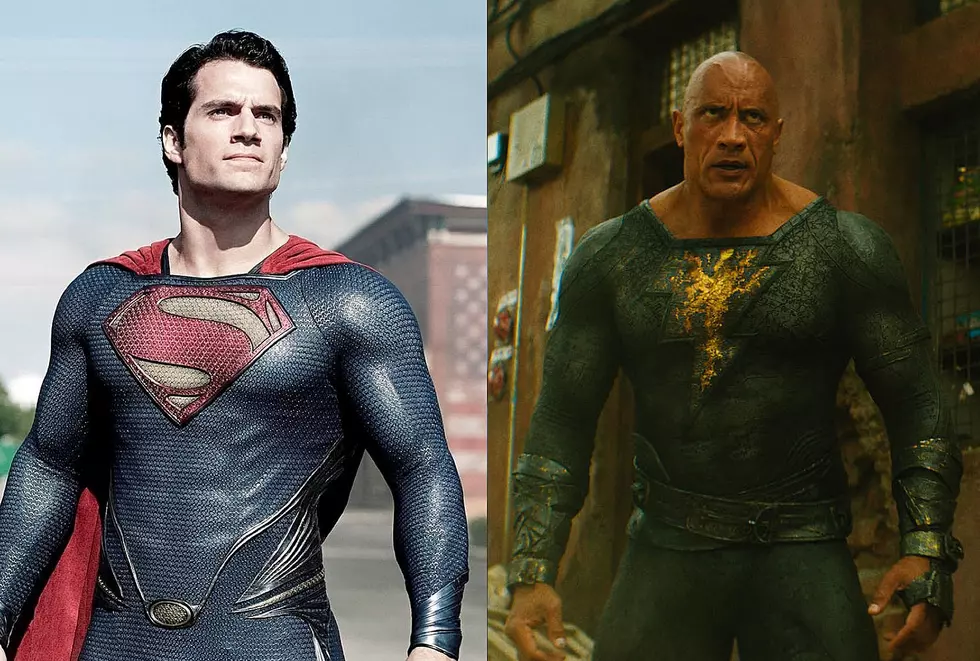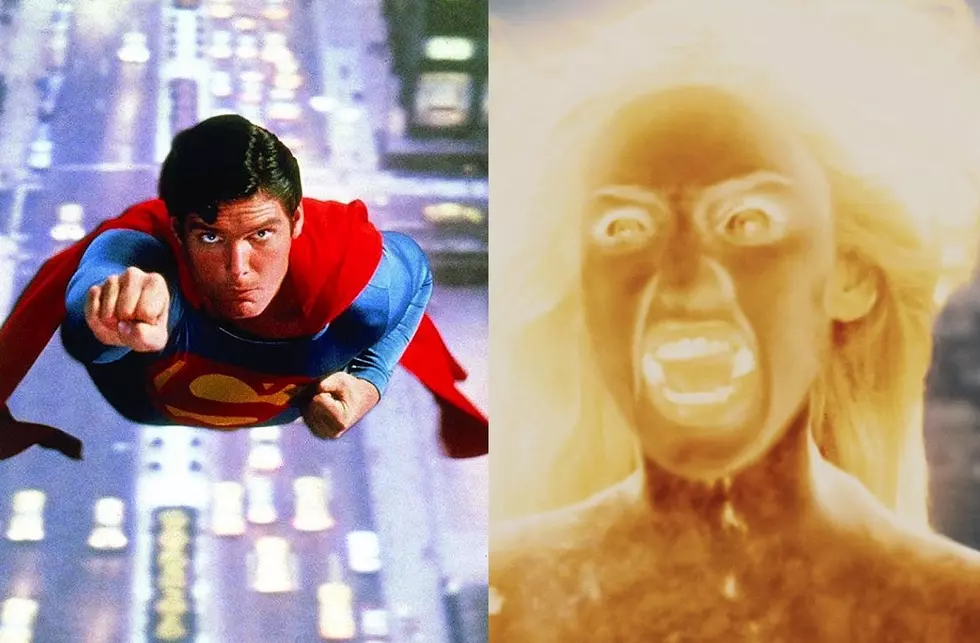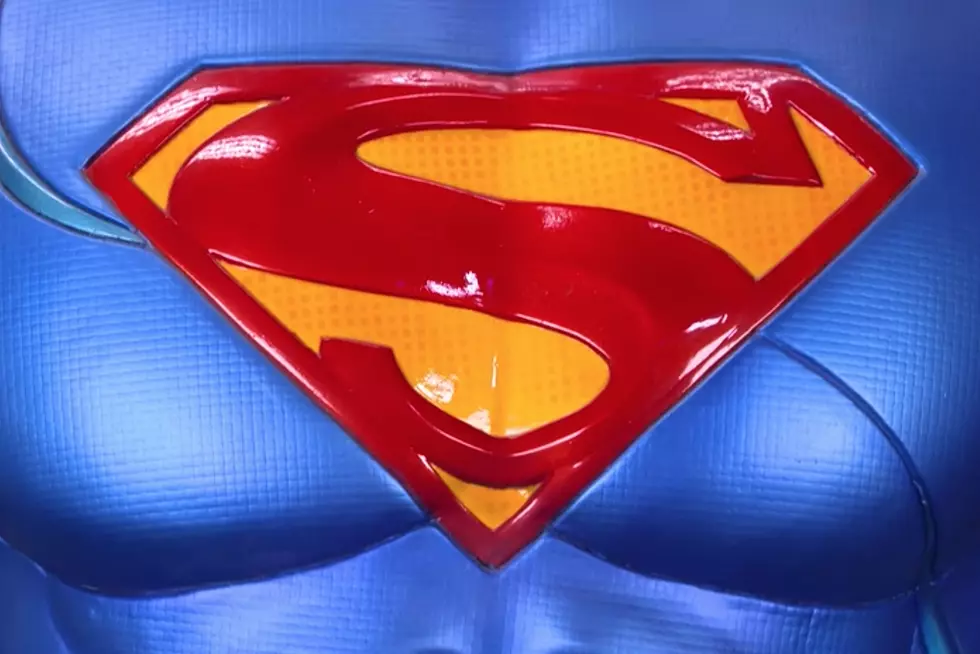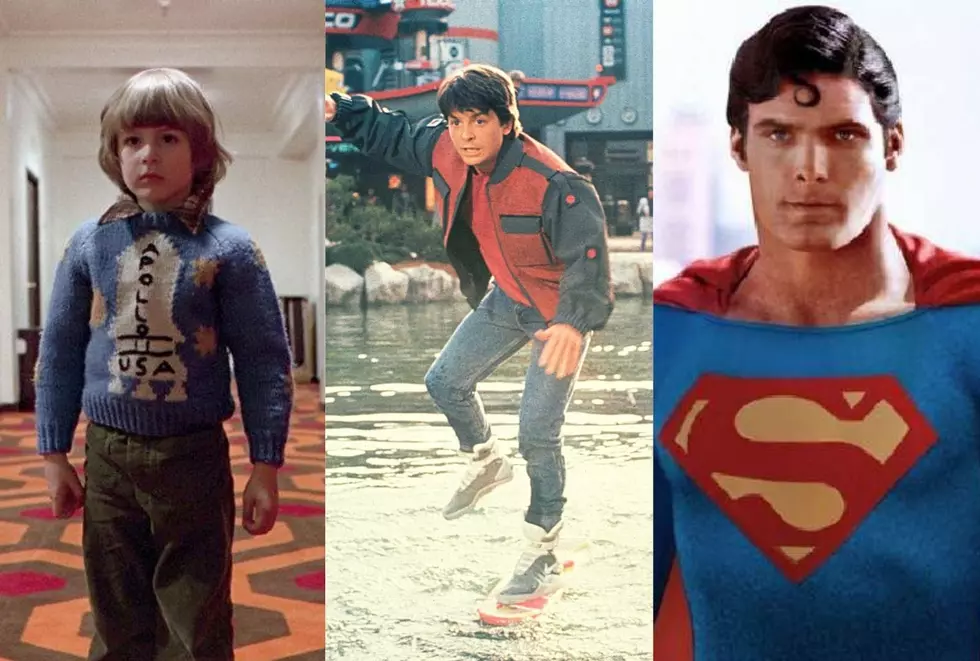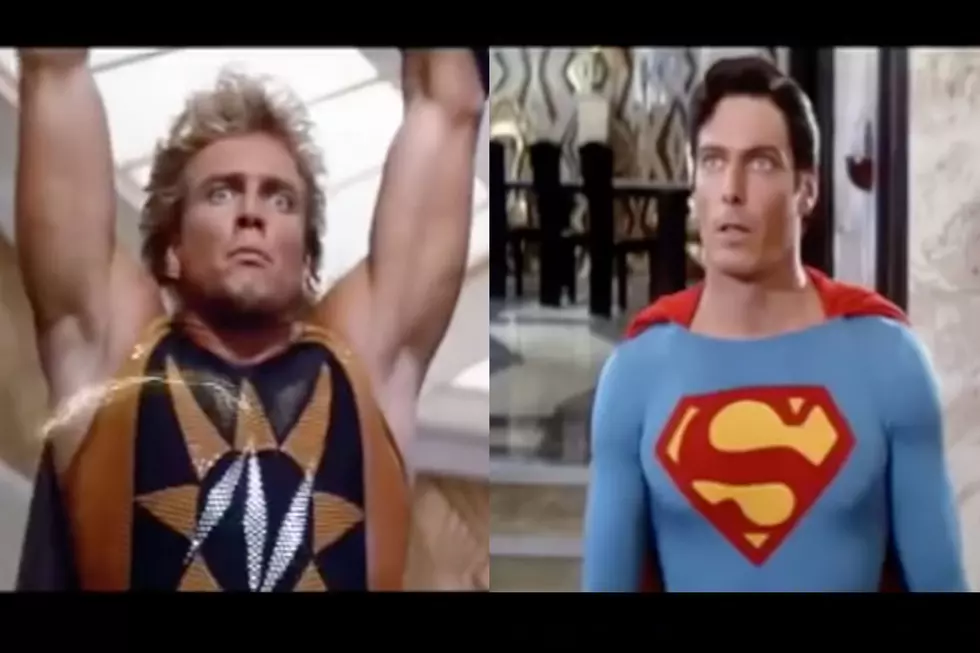
35 Years Ago: ‘Superman IV’ Destroys the Man of Steel
Not that there’s a good time for third sequels, but 1987 produced two fourth entries that utterly sunk once-beloved film franchises. Jaws: The Revenge and Superman IV: The Quest for Peace were released one week apart that summer, and both films not only marked the last ever films in their respective series but are considered two of the worst movies of all time.
The Superman series had already appeared to hit rock bottom with 1983’s tonally incoherent Superman III (which serves as more of a Richard Pryor comedy vehicle than a superhero movie). But that’s before Cannon Films took over. The infamously cheap and mercenary company had become an unlikely success story, mainly by keeping costs low, concepts high, and relying on the business acumen of co-founders and cousins Menahem Golan and Yoram Globus to wring profits through canny marketing and pre-sold television and home-video rights. And while Golan and Globus’ wheeler-dealer approach to film production and distribution worked for a while (thanks to the occasional hit like Missing in Action or Enter the Ninja), by the time Cannon bought the rights to Superman from producers Alexander and Ilya Salkind for $5 million, Cannon’s formula had fizzled thanks to overextension and a string of uncharacteristically expensive flops.
With Cannon’s ludicrous arm-wrestling flick Over the Top having bombed at the box office earlier that year (the Golan-directed stinker earning barely enough to cover star Sylvester Stallone’s exorbitant $12 million salary), the company went into emergency austerity mode. Superman IV’s planned budget of $30 million (already shaving $9 million from Superman III’s budget) was ordered cut down to a mere $17 million, just as production began. Money might not be everything when it comes to creating great movies, but for an effects-heavy tentpole film intended to turn the low-rent Cannon into a major Hollywood player, the sudden and precipitous drop in available cash meant disaster.
Superman IV was already in peril before then, however. Superman III had been a modest hit for Warner Bros. four years earlier, but the film’s tip over into goofiness had sapped critical and audience enthusiasm for further big-screen Superman stories. Christopher Reeve was similarly burnt out at the prospect, only agreeing to don Superman’s tights and cape again once Cannon agreed to fund Reeve’s passion project Street Smart (where Reeve was ultimately acted off the screen by an early Morgan Freeman performance) and to allow Reeve to co-write the film’s story and have control over the director. (Reeve was also paid $6 million, which, thanks to Cannon’s last-minute cuts, represented 35% of the overall budget.)
There were a few glimmers of hope, in retrospect. Margo Kidder, after being essentially written out of Superman III (supposedly for vocally objecting to the Salkinds treatment of Superman director Richard Donner) agreed to return as Lois Lane. Gene Hackman reprised his nemesis role of Lex Luthor as well, after being absent for the previous installment. And Reeve’s idea to have Superman confront the seemingly insoluble real-world issue of nuclear disarmament suggested all manner of possibilities to explore Superman’s character and mission on Earth.
But that’s essentially where the good news ends, even though Reeve remained in fine fettle as both the bumbling Clark Kent and “world’s biggest Boy Scout” Superman. Reeve, whose life and career were irrevocably changed eight years later in a catastrophic horse-riding accident, may never have been the best actor, but he was, and remains, the ideal Superman.
The film’s script, credited to Lawrence Konner and Mark Rosenthal, is a complete mess, exacerbated by further postproduction Cannon meddling. Imagining that more showings would pull in enough cash to keep Cannon afloat, Golan and Globus ordered director Sidney J. Furie’s 134-minute cut reduced to a threadbare 90 minutes. Even with this being the shortest Superman movie since the days of George Reeves, however, Superman IV: The Quest for Peace is a sluggish and interminable slog to sit through.
From the first would-be audience-dazzling set piece (where Supes saves a Russian satellite crew), the effects-scrimping is dispiritingly evident. A head-on shot of Reeve’s Superman flying right at the camera with a determined scowl is repeated no fewer than four times in the film’s first 20 minutes, only the background changing like a Zoom backdrop. Meanwhile, Superman’s rekindled relationship with Kidder’s Lois only amplifies the morally questionable creepiness of the mind-wiping that erased Lois’ knowledge of the Clark-Superman question at the end of Superman II. Deciding to once more reveal himself to the woman he supposedly loves once he finds himself in need of a morale pick-me-up, a depressed Clark simply hurls the two of them off his apartment’s balcony, untroubled by Lois’ initial mortal fear — and then re-erasing her memory after an especially unimpressive round-the-world repeat of the first film’s tandem flying sequence.
Watch 'Superman IV: The Quest for Peace' Trailer
Superman’s quest to rid the world of nuclear weapons (announced, to unanimous applause before a hastily assembled United Nations) is accomplished in three minutes of screen time, his arsenal of intercepted and purloined missiles hurled into an enormous space net like so many trout. Reeve’s heart may have been in the right place, but, as the actual world hurtled toward hair-trigger Cold War nuclear annihilation, the execution here is woefully unsophisticated and consequence-free. Superman in the comics has had to grapple with his place as a superman in a world of erring mortals, the question of why the most powerful being in the universe can’t just solve all our problems unilaterally producing storylines of thematic depth and complexity. This isn’t one of them.
The only reason why the world can’t hum along happily without the specter of nuclear war turns out to be Lex Luthor’s greed. Broken out of prison by his obnoxiously trendy valley kid nephew (a comic-relief Jon Cryer, who later made amends with his effectively layered turn as Lex in TV’s Supergirl), Luthor’s love of money and hatred of Superman sees him whip up a clone of the Man of Steel to get war profits back up and running into his pockets. That said clone is played by non-actor and former Chippendale’s dancer Mark Pillow in a wordless lunk of a performance (his Nuclear Man’s voice is dubbed by Hackman), with metallic fingernail extensions and '80s-vintage Ghostbusters lightning effects, is disastrous, certainly. But even Hackman’s once-intimidating and formidable Luthor, accompanied by the exhausting Cryer and Alexander Courage’s incessantly irritating comic theme music, is a bore here. (And Hackman’s insistent use of the word “nucular” in describing Nuclear Man is like very long nails on a chalkboard.)
It’s in the extended and deeply disappointing confrontation between the solar-powered Nuclear Man and Superman that the film’s various compromises and terrible narrative choices turn Superman IV into a groaning parody of itself. Apart from the repeated composite flying shots (each one a travesty of the original film’s effortlessly witty sequences), the complete absence of any comprehensible physics in the duo’s moon-set fight sequence, and a supervillain whose first move is a cat-scratch isn’t particularly menacing, the fact that Luthor’s grand creation powers down immediately upon being shoved out of direct sunlight makes Superman’s inevitable victory a whole lot less impressive than it might be. (Pillow’s Nuclear Man, whenever the gloating Luthor shuts his hideout’s drapes, obligingly collapses to the floor, inexplicably off-gassing as if his hydraulics were cut.) Superman II’s conclusion may have regrettably relied on some non-canonical superpowers to save the day (that expanding superemblem snare thing still rankles), but, here, when Superman is confronted with a destroyed Great Wall of China, Cannon’s penny-pinching sees him suddenly empowered with what can only be called “reverse-camera wall-building vision.”
It’s pedantry to complain about logical inconsistencies in a story about an alien god who can chop the top off a mountain to plug a volcano (as Superman does at one point). But the magic of a Superman movie is sustained only when everyone involved buys into the premise.
When Superman here shifts the moon’s position to de-power his foe (without a thought toward the resulting gravitational havoc), or when secondary love interest Mariel Hemingway (a paper-thin, quickly converted parody of Rupert Murdoch-style tabloid fear-mongering) is brought into deep space by Nuclear Man without a spacesuit (she’s fine), Superman IV: The Quest for Peace is ultimately, and dishearteningly, revealed as the work of people who simply don’t give a damn. The film, which barely doubled its meager budget, was the beginning of the end for Cannon, as outlined in the entertaining 2014 documentary Electric Boogaloo: The Wild, Untold Story of Cannon Films. It was also the last Superman movie until the big-budget sort-of sequel (it ignores Superman III and IV) Superman Returns in 2006, in which actor Brandon Routh’s uncanny resemblance to the late Christopher Reeve remains one of its greatest charms.
Superman Movies Ranked
More From US 103.1 FM


